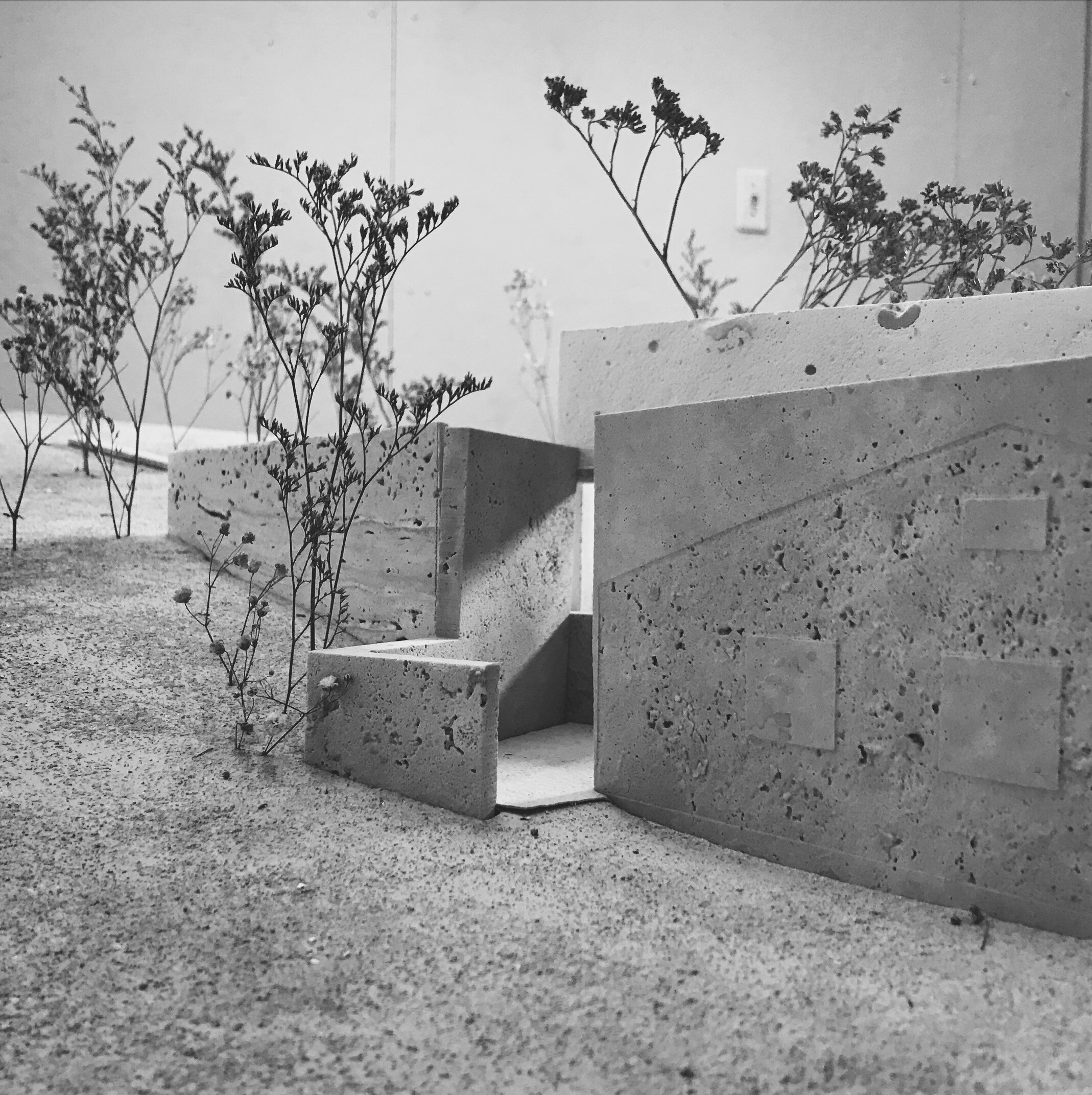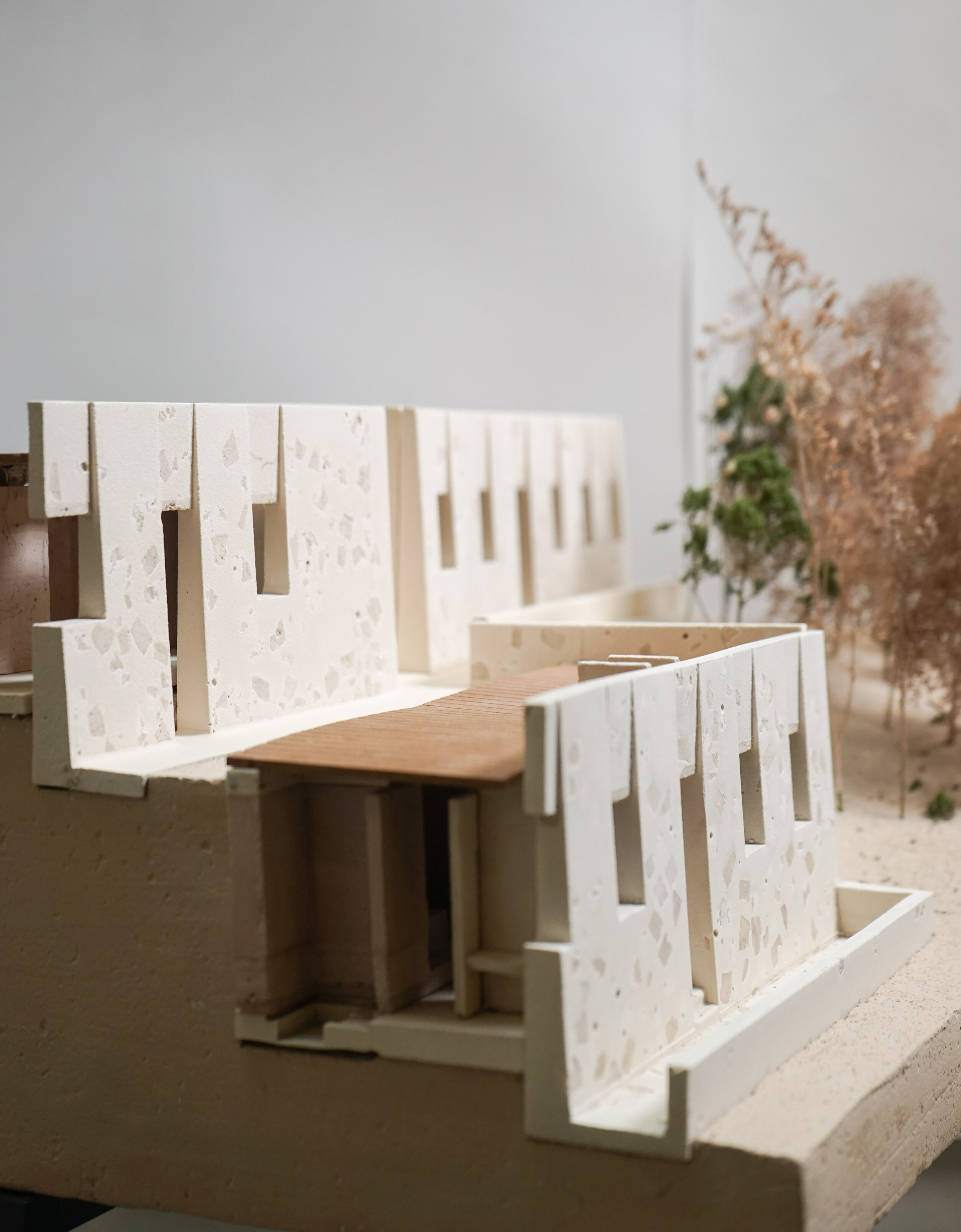ENG |
Situated at the base of the Atlas mountains 80 km south of Fez, the Toumliline Monastery was founded in 1952 as a rural haven for a group of Benedictine monks. Despite being a Christian community in an Islamic land, this small monastery developed into a space of education and dialogue, hosting international conferences and meetings on interfaith relations, politics, and literature. During its short lifespan, the monastery also served as a school, library, and hospital for the local community. After the last monks left the monastery in 1968, the site has remained abandoned.
The objective of the graduate studio “Off-Campus”, taught by O+C’s principals and founders Linna Choi and Tarik Oualalou, was to reactivate and transform the site of the abandoned monastery at Toumliline into an experimental campus of learning and cultural exchange. Students were asked to imagine a new center at Toumliline that would serve as a ‘mirror campus’ to Fez’s Al-Quaraouiyine University, the oldest existing and operating university in the world and a leading center for education in the Muslim world. Disconnected from the urban fabric, the new campus was required to be a self-sustaining territory: dimensioned according to available resources, and integrated into a circular economy. Given the rural context of the site, students were also encouraged to experiment with local building materials found on-site, with a focus on new methods of earth construction discussed with specialists and researchers both at MIT and in Morocco.
The studio was divided into three modules: Precedents and Programs, Group Site Proposals, and Individual Projects. During the first module, students worked collaboratively in small groups to develop a territorial and programmatic proposal for the site in its entirety. After the midterm review and a studio trip to the site, as well as to Le Corbusier’s Convent of La Tourette, the students decided upon a singular site strategy to develop together as a group. The overall site was then divided into a series of smaller overlapping territories, which students chose and developed individually as a final project. This collaborative design approach encouraged students to explore issues of negotiation and spatial connection by accounting for the conditions created by the adjacent projects of their classmates, ultimately creating an ‘exquisite corpse.’
















